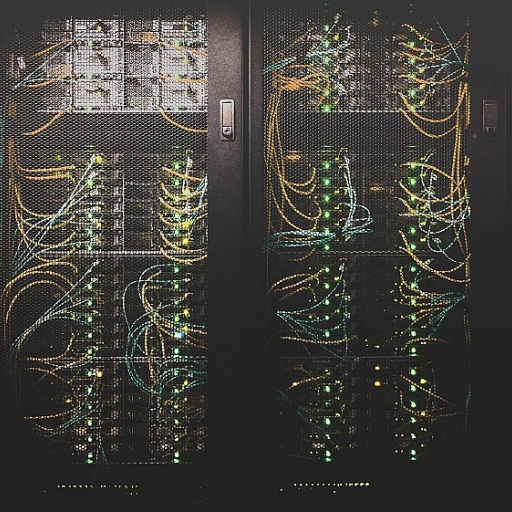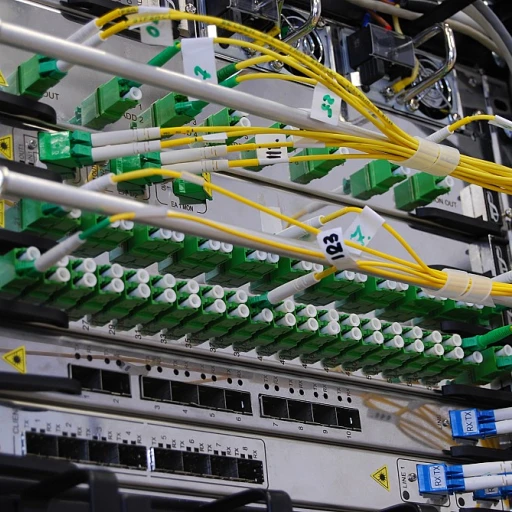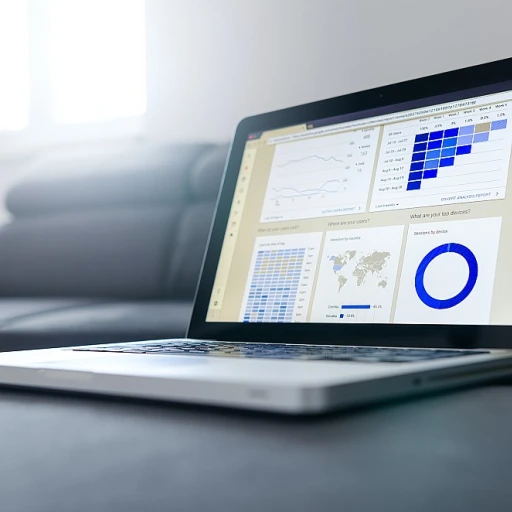
Current Trends in Rail Management Software
Emerging Trends in Rail Management Software
The rail industry is experiencing a transformative phase, driven by advancements in rail management software. This evolution is crucial for enhancing the efficiency and reliability of railway operations. As the demand for seamless rail transport grows, the focus is shifting towards integrating innovative solutions that address both current and future challenges.
One of the key trends is the adoption of cloud-based systems. These systems offer flexibility and scalability, allowing rail operators to manage their assets and operations more effectively. By leveraging cloud technology, railway companies can access real-time data, which is vital for optimizing train schedules and improving overall traffic management.
Another significant trend is the implementation of ERTMS (European Rail Traffic Management System). This standardized system enhances interoperability across different rail networks, ensuring smoother operations and increased safety. ERTMS is becoming a cornerstone in modern rail infrastructure, particularly in regions like Europe and Asia Pacific, where cross-border rail traffic is prevalent.
In addition to these, the integration of digital asset management tools is gaining traction. These tools help in monitoring and maintaining railway assets, reducing downtime and improving the lifespan of critical infrastructure. By utilizing advanced analytics, rail operators can predict maintenance needs and prevent potential disruptions.
The market is also witnessing a surge in the development of railroad software tailored for specific regional needs. For instance, North America and the Middle East are investing in solutions that cater to their unique operational challenges, such as harsh weather conditions and complex logistics.
As we delve deeper into the future of rail management technology, it is essential to recognize the role of innovative software in transforming digital workplaces. For more insights on how software is reshaping industries, explore our detailed analysis.
Challenges in Implementing New Technologies
Overcoming Barriers in Rail Technology Implementation
Implementing new technologies in rail management systems presents a unique set of challenges. As the industry evolves, integrating advanced solutions like digital asset management and real-time data analytics becomes crucial. However, the transition is not always seamless.
One of the primary hurdles is the complexity of existing infrastructure. Many railway systems, particularly in regions like North America and parts of Asia Pacific, rely on outdated technology. Upgrading these systems to accommodate modern software solutions requires significant investment and time. The integration of European Rail Traffic Management System (ERTMS) standards, for instance, demands comprehensive changes to both hardware and software components.
Another challenge lies in the data management aspect. Rail operations generate vast amounts of data daily. Efficiently processing and utilizing this data for operations management and maintenance can be daunting. Cloud-based solutions offer potential, but concerns over data security and privacy remain prevalent.
Furthermore, the market for railroad software is highly competitive, with numerous vendors offering varied solutions. Selecting the right management software that aligns with specific operational needs and budget constraints is critical. This decision-making process can be overwhelming for rail operators.
In regions like the Middle East, where rail infrastructure is rapidly expanding, the challenge is to implement systems that are both scalable and sustainable. Balancing the need for cutting-edge technology with environmental considerations is essential for long-term success.
To explore how companies are navigating these challenges, you can read more about innovative approaches in rail technology.
The Role of Artificial Intelligence in Rail Management
Artificial Intelligence: The Brain Behind Modern Rail Systems
Artificial Intelligence (AI) is revolutionizing the way rail management systems operate, bringing a new level of efficiency and precision to railway operations. By leveraging AI, railways can enhance their management systems to predict maintenance needs, optimize traffic management, and improve overall service delivery.
AI-driven solutions are particularly valuable in processing vast amounts of data generated by rail operations. This data, when analyzed in real time, can provide insights into asset management, helping to prevent costly breakdowns and ensuring that trains run on time. The integration of AI into rail management software is becoming a key feature in the system market, especially in regions like North America and Asia Pacific, where rail transport is a critical component of the infrastructure.
Moreover, AI is instrumental in the development of the European Rail Traffic Management System (ERTMS), which aims to standardize train control and command systems across Europe. By utilizing AI, ERTMS can enhance the interoperability of rail systems, leading to more efficient cross-border rail operations.
In the Middle East, AI is being used to develop cloud-based solutions that improve the flexibility and scalability of rail management systems. These digital solutions are crucial for managing the increasing demand for rail services in rapidly growing urban areas.
As the rail industry continues to evolve, the role of AI in rail management will only expand, offering new opportunities for innovation and efficiency. The future of rail management technology will undoubtedly be shaped by AI, as it provides the tools needed to meet the challenges of modern rail operations.
Impact of IoT on Rail Systems
Harnessing the Power of IoT in Rail Systems
The integration of the Internet of Things (IoT) into rail systems is revolutionizing the way rail management operates. IoT technology enables real-time data collection and analysis, providing unprecedented insights into rail operations and asset management. This digital transformation is crucial for enhancing the efficiency and safety of rail transport.
One of the key features of IoT in railway management is its ability to monitor the condition of critical infrastructure and rolling stock. Sensors placed on trains and tracks collect data on various parameters, such as temperature, vibration, and wear. This data is then transmitted to a central management system, allowing for predictive maintenance and reducing the risk of unexpected failures. By implementing IoT solutions, rail operators can optimize maintenance schedules, thereby minimizing downtime and extending the lifespan of assets.
Moreover, IoT facilitates improved traffic management by providing real-time updates on train locations and speeds. This information is vital for optimizing rail traffic flow and reducing congestion, especially in busy regions like North America and Asia Pacific. Enhanced traffic management not only improves punctuality but also increases the overall capacity of rail networks, making them more competitive in the transport market.
In the context of rail shipping, IoT-enabled systems offer better tracking and management of freight. Real-time data on cargo conditions and locations ensures that goods are transported efficiently and safely, meeting the growing demands of the global supply chain.
As rail systems continue to evolve, the adoption of IoT technology is expected to grow, particularly in regions like the Middle East, where infrastructure development is a priority. The integration of IoT with existing systems, such as ERTMS (European Rail Traffic Management System), will further enhance the capabilities of rail management software, paving the way for more advanced and sustainable rail operations.
Sustainability and Rail Management Software
Green Initiatives in Rail Management
As the world increasingly prioritizes sustainability, the rail industry is no exception. Rail management software is playing a pivotal role in enhancing the sustainability of rail operations. By optimizing train schedules and routes, these systems help reduce fuel consumption and emissions. This is particularly crucial as rail transport is often seen as a greener alternative to road and air travel.
Efficient Resource Utilization
Railway management systems are designed to maximize the efficiency of resources, including energy and materials. By leveraging real-time data, these systems can predict and prevent potential issues, minimizing waste and improving the overall efficiency of rail operations. This not only contributes to sustainability but also enhances the reliability of rail services.
Integration with ERTMS
The European Rail Traffic Management System (ERTMS) is a key component in the push for more sustainable railways. By standardizing signaling and communication across Europe, ERTMS reduces the need for physical infrastructure, leading to less environmental impact. Rail management software that integrates with ERTMS can further streamline operations, ensuring that trains run on time and with minimal energy consumption.
Cloud-Based Solutions for Sustainability
Cloud-based rail management solutions offer a sustainable alternative to traditional systems. By reducing the need for physical servers and infrastructure, these solutions lower the carbon footprint of railway operations. Additionally, cloud-based systems provide scalability and flexibility, allowing rail operators to adapt to changing demands without significant environmental impact.
Global Impact and Regional Variations
The impact of sustainable rail management software varies across regions. In North America, the focus is often on reducing emissions and improving energy efficiency. In Asia Pacific, where rail networks are rapidly expanding, the emphasis is on integrating sustainable practices from the outset. Meanwhile, in the Middle East, the adoption of digital and sustainable rail solutions is driven by the need to modernize infrastructure and reduce environmental impact.
Future Prospects for Rail Management Technology
Emerging Technologies Shaping the Future
The future of rail management technology is poised for significant transformation, driven by the integration of cutting-edge solutions. As the industry evolves, several key technologies are expected to play a pivotal role in shaping the landscape.
Cloud-Based Solutions and Real-Time Data
Cloud-based management systems are becoming increasingly vital, offering scalable and flexible solutions for rail operations. These systems enable real-time data analysis, enhancing decision-making processes and improving overall efficiency. By leveraging cloud technology, rail operators can optimize asset management and streamline maintenance operations, ensuring timely interventions and reducing downtime.
Advanced Traffic Management Systems
Traffic management is another area where innovations are making a substantial impact. Enhanced traffic management systems, incorporating real-time data and predictive analytics, are improving the flow of rail traffic and minimizing delays. These systems are crucial for managing the growing demand for rail transport, particularly in regions like North America and Asia Pacific, where rail infrastructure is expanding rapidly.
Integration of ERTMS and Digital Solutions
The European Rail Traffic Management System (ERTMS) is set to become a standard in rail operations, offering a unified approach to signaling and communication. Its integration with digital solutions will enhance interoperability across different rail networks, facilitating smoother cross-border operations. This is particularly relevant for the Middle East, where diverse rail systems are being developed.
Sustainability and Green Initiatives
Sustainability remains a critical focus for the future of rail management software. As discussed earlier, the industry is increasingly adopting eco-friendly practices, such as energy-efficient trains and sustainable infrastructure. Future software solutions will likely prioritize environmental impact, aligning with global efforts to reduce carbon emissions and promote sustainable transport.
Market Trends and Opportunities
The rail management system market is expected to witness substantial growth, driven by technological advancements and increasing investments in infrastructure. Companies offering innovative railroad software and services are well-positioned to capitalize on these opportunities. As the market evolves, staying ahead of trends and embracing new technologies will be essential for maintaining a competitive edge.





-large-teaser.webp)








